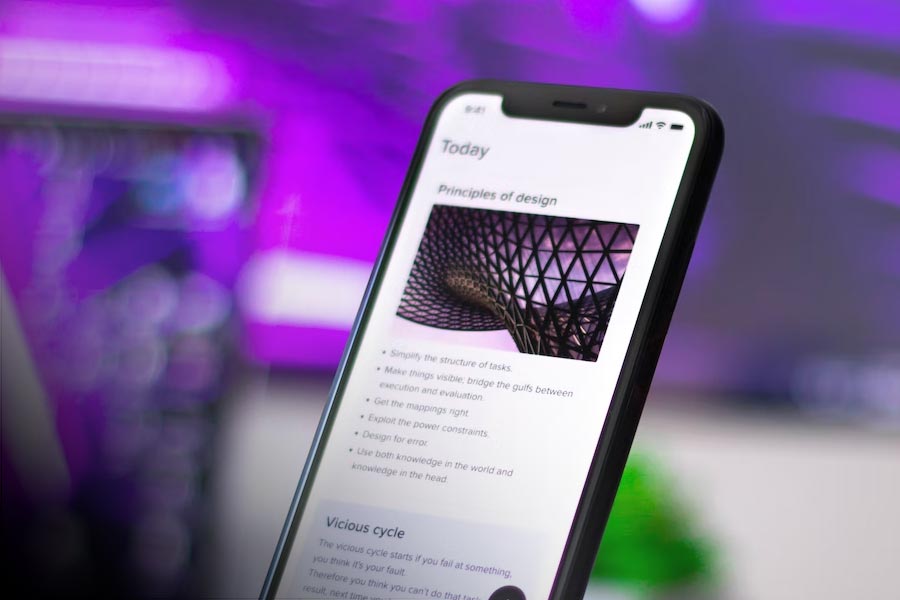10-Steps Guide To Create A Successful Mobile Application

Introduction
The mobile app market is growing rapidly in today’s fast-paced world. Consequently, mobile marketing is becoming more competitive. In order to ensure the visibility of apps in such a competitive scenario, the app development agency needs to be very particular about the approach being followed for app development. To create a successful mobile app, we follow a systematic approach to the app development lifecycle. To help you get started, we have outlined 10 steps for creating a successful mobile application.
Step 1: An app idea is the first step to a successful mobile app
The first thing to do when creating a successful mobile app is to choose the features you want. Customers should see tangible benefits from the app, such as a reduction in costs through productivity enhancements, solving a problem, etc.
Step 2: Identification / Clarification
You need to be clear and identify the following things in order to create a successful mobile app:
Target Users
The target users should be considered when developing an app. Apps that have a clear understanding of the target audience will be more successful.
Support for mobile platforms and devices
When selecting mobile platforms and devices, there are several factors to consider, including coverage, device support, performance, and other features.
Revenue Model
The app market is growing like never before. To generate revenue, the Android Application Development Company needs to select the right approach in accordance with the application. There are different models of generating revenue from mobile apps. These include in-app purchases, ads, subscriptions, and pay per download. The developer must make sure that the approach is compatible with the application. They must attract users and make money on various aspects of the app.
Step 3: Create your app
Another necessary factor that determines the success of your app on the market is its design. Good UX design and UI-UX are crucial to app discoverability. Custom Mobile App Development Company focuses on UI design and multi-touch gestures for smartphones. They also need to consider platform design standards. Today, emphasis is on UI design as it plays a pivotal role in the success of an app. Designing a mobile app is becoming increasingly popular as it creates an immediate impact on the mind of people while ensuring the usability of an app.
Step 4: Choose a development approach – native, hybrid, or web
It is crucial to choose the right approach to developing an app. The backend development of an app should be done in accordance with the client’s time and budget. Our app development agency prefers agile development.
Native
Native apps allow for the best user experience but take a lot of time and skill to develop. Native apps require knowledge and expertise, as well as platform-specific expertise. Native apps can be expensive and take a lot of time to develop. However, they offer the best user experience.
Web
Web apps are easy to create and cost-effective. They can be run on many platforms. These web apps are created using HTML5, CSS, and JavaScript code. These web apps have less power than native apps.
Hybrid
The latest development approach for any app is the hybrid approach. This combination of prebuilt native containers and on-the-fly Web coding allows you to get the best of both. This approach combines native language with web code to create unique features.
Step 5: Create an app prototype
The next step is to create a prototype. This is the process of taking your idea and making it into an application that has some basic functionality. It makes it easier to sell your idea. Potential buyers can see the tangible benefits and not just read product descriptions.
It can be very useful in finding investors, working with manufacturers, and finding licensees. It is possible to share your prototype app with testers to conduct functional testing. This will give you an idea of the changes that are needed to make it a mobile application.
Step 6: Use the appropriate analytics tool
You should also incorporate analytics to give you an accurate picture of your visitors, their origins, and why they are coming back.
Here are some mobile analytics tools that can help in this process:
-
Google Analytics
-
Firebase
-
Mixpanel
-
Preemptive
Step 7: Identify your testers and get feedback
Beta testing is your first chance to receive feedback from your customers. This is particularly important because it increases your visibility in the app shop. This helps reduce product risk and gives you an initial push in the store. Another important task is to identify beta testers in order to make a mobile app that works.
Prepare for the beta launch
Define Your Target Customer
It is important to identify your target audience clearly. This will allow you to choose the best testers for your beta tester recruitment. Beta testing is easier when you do your market research early.
Eliminate Bugs
It is possible to eliminate as many bugs as possible by beta testing your app with a limited number of users. It is essential for the quality assurance of mobile apps.
Identify Goals
Beta testing offers the best way to get feedback from customers. This is a great way to get to know your target market and understand their needs. It helps to focus your efforts by identifying goals for beta testing. These goals will reduce the risk of your product’s launch.
Step 8: Release your app
Planning and controlling the movements of releases to live and test environments is essential for the successful deployment of an app. GyanMatrix’s main objective is to protect the environment and ensure that the correct components are released.
Step 9: Metrics
In the past decade, there has been a significant increase in mobile app users. It is, therefore, crucial to gather accurate metrics. It is becoming more important to collect accurate metrics as mobile apps are increasingly popular.
Important input metrics that should be remembered:
-
Funnel analysis is a way to determine why users fail to complete desired actions such as in-app purchases and ad clicks.
-
Social sharing is a way to determine which aspects of your app are most popular.
-
Correlating demographic data and user behavior.
-
You can track time and place to gain insight into the contexts where your app is being used.
-
It is crucial to capture the emergent behavior and preferences of your users.
Step 10: Update your app with new features and improvements
After capturing the metrics, now is the time to upgrade your app with improvements and innovative features. An app that lacks innovative features will eventually lose its utility. Your app’s visibility and downloads will increase if you have innovative features. Also, as the leading provider of Web Application Development Services, we keep updating your mobile application to meet new guidelines offered by the various platforms.
Conclusion
These are just a few of the steps to consider when developing an app. These steps will help you create an app that is long-lastingly successful. It is almost impossible to pinpoint the steps that are crucial for a successful app. Reach out to GyanMatrix, a leading Android Application Development Company in India, for successful mobile app development.
Cybersecurity in 2025: Strategies for Staying Ahead of AI-Powered Threats
In 2025, the cybersecurity landscape is more complex than ever. The rise of AI-powered ...
How Generative AI is Reshaping Custom Software Development
Generative AI has moved beyond the hype and is now becoming a transformational force in ...
From Legacy to Cloud-Native: A Roadmap for Digital Transformation
In today’s hyper-competitive digital world, businesses cannot afford to be slowed down by rigid, outdated ...
AI‑Powered Personalization in Custom Apps: Real‑World Use Cases for 2025
In today’s fast-moving digital landscape, personalization is no longer a luxury—it’s a user expectation. ...
Agentic AI: Empowering the Next Generation of Smart Enterprises
In today’s rapidly evolving digital world, organizations are no longer just competing on products or ...
Latest Trends Followed by Mobile App Development Companies in 2025
Introduction The mobile app development industry is evolving at lightning speed, driven by user demands, ...







